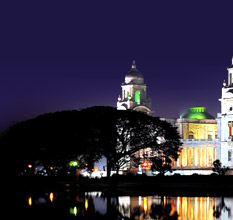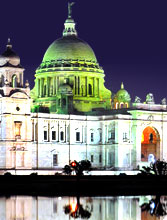 Amongst the famous and unique art forms of West Bengal, the scroll painting holds a special place. Popularly known as Pat Chitra in the state, it is actually a very unique form of painting, very traditional and folk in nature. The practitioners of this art are known as 'Patidars' in the state. Patidars publicize their art in a very unique way. They roam around from village to village with their scroll paintings, sing songs and dance to narrate the theme of their painting. The theme of scroll paintings may vary from religion to activities of daily life.
Amongst the famous and unique art forms of West Bengal, the scroll painting holds a special place. Popularly known as Pat Chitra in the state, it is actually a very unique form of painting, very traditional and folk in nature. The practitioners of this art are known as 'Patidars' in the state. Patidars publicize their art in a very unique way. They roam around from village to village with their scroll paintings, sing songs and dance to narrate the theme of their painting. The theme of scroll paintings may vary from religion to activities of daily life.For making the scroll painting, a thick cloth is treated with cow dung and lac. The outlines of the figures to be sketched are drawn on the cloth, with lamp black and naturally-obtained red color. Vegetable colors are then filled inside the outlines, adding brightness and longevity to the painting. It is because of the use of naturally-derived colors that the scroll paintings look as bright and fresh as a new painting, even after 50-60 years. The length of the scroll paintings varies between 4 and 50 feet. However, an average Pat Chitra is about 15 feet long.
A scroll painting is divided into vertical compartments of varying sizes and each block comprises of a distinct episode of the story being narrated. Though the popularity of this unique art has suffered major setbacks, it is one of those few handicrafts of West Bengal that are still surviving the ravages of time. Many-a-times, the painting is done on paper, instead of a thick cloth. Even the themes of paintings have changed in recent times. New themes have been incorporated in the Pat Chitra, to cater to the changing taste of their clientele.
Contemporary Patidars depict natural disasters, like storms and floods, and commentary on social matters in their paintings. Having practiced this art for hundreds of years, generation after generation, they have made sure to bring changes in it, according to the changing taste of customers, to make the art survive for a long time. While in West Bengal, you must visit the scroll painting exhibition and galleries to understand the beauty of this art. An art very similar to Pat Chitra of West Bengal can be seen in China and Japan as well.








